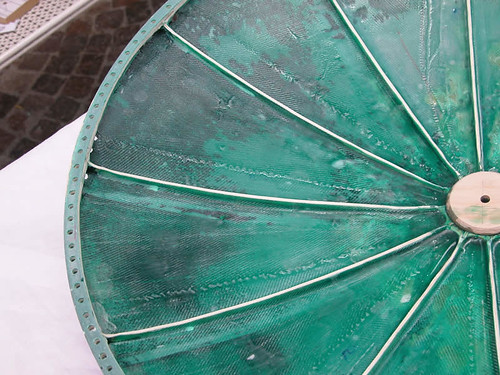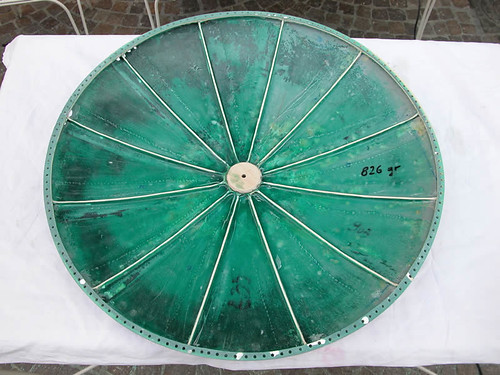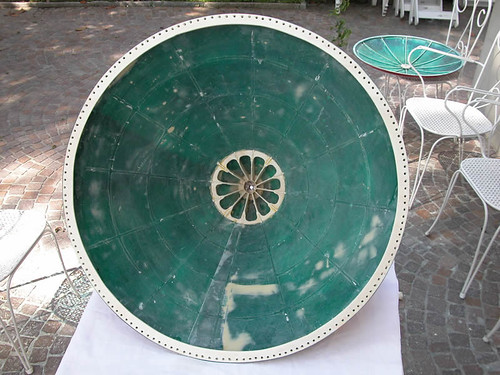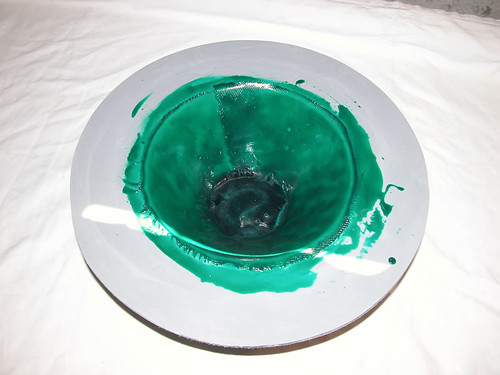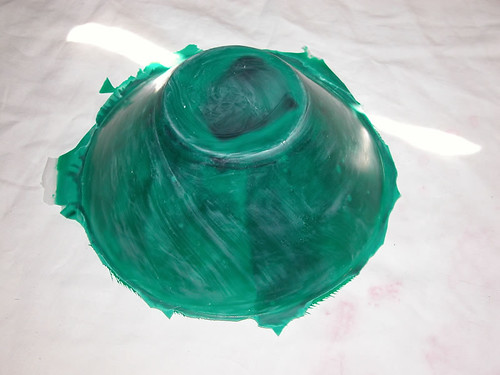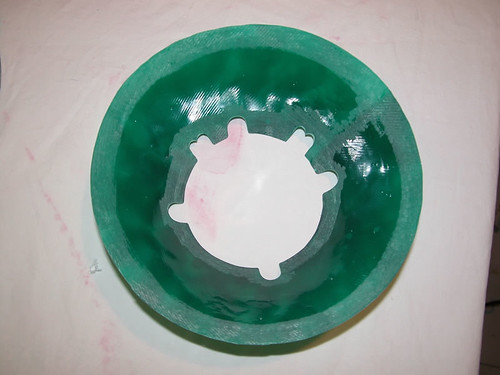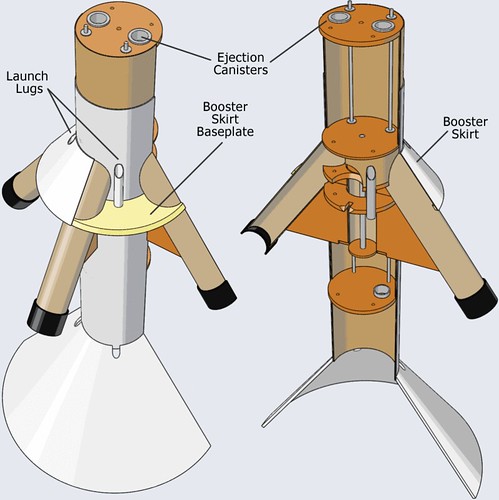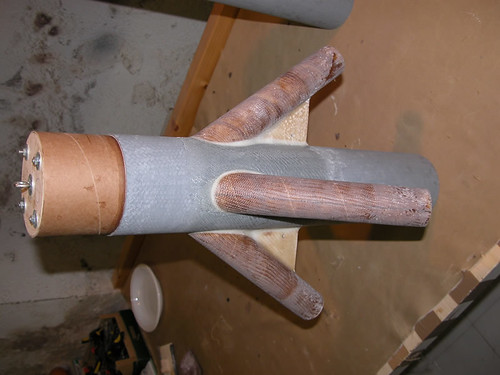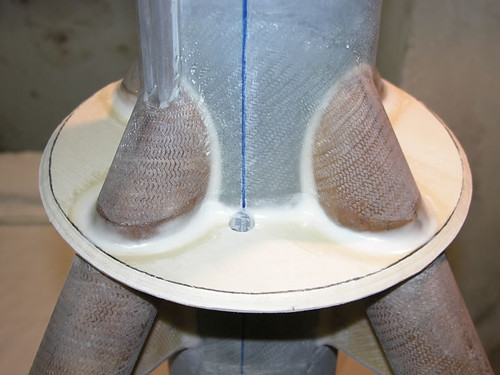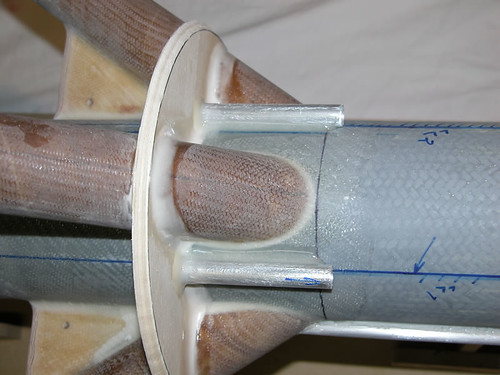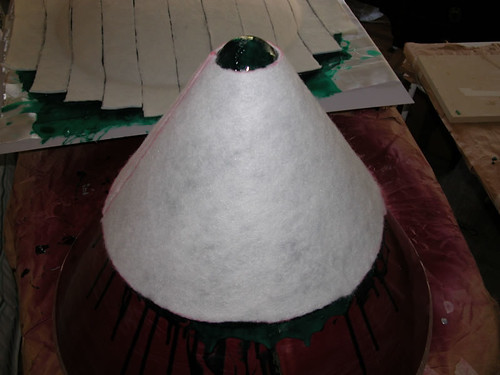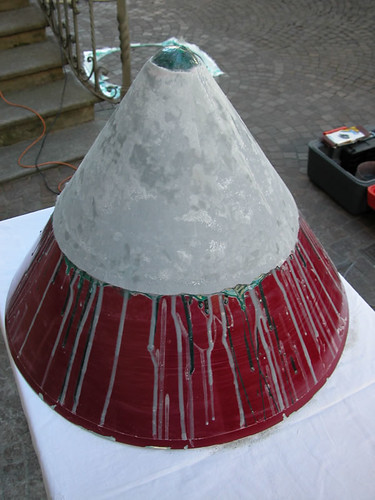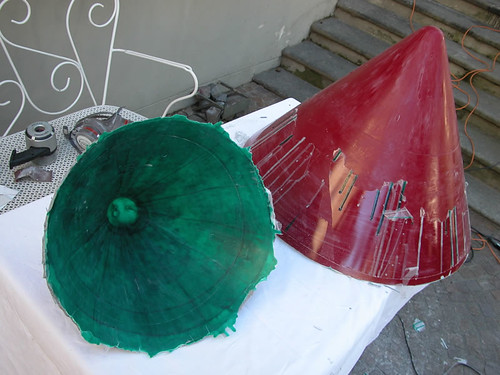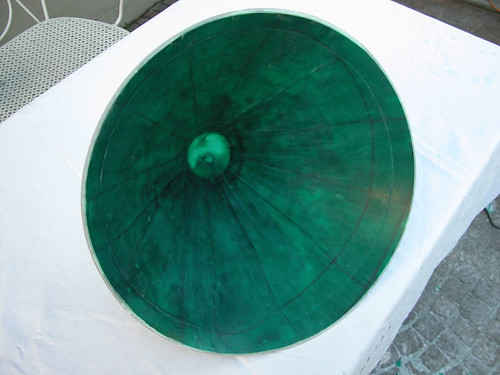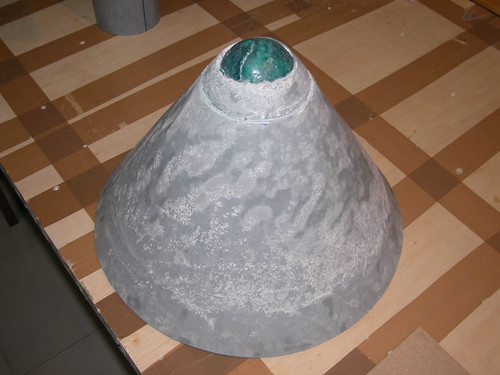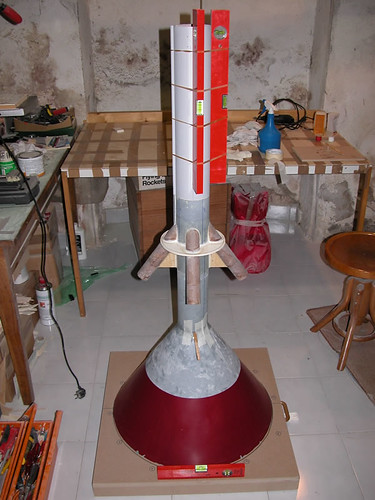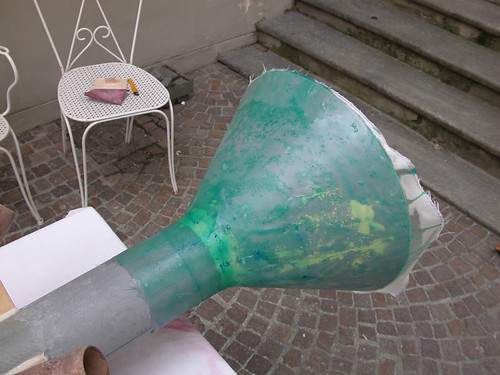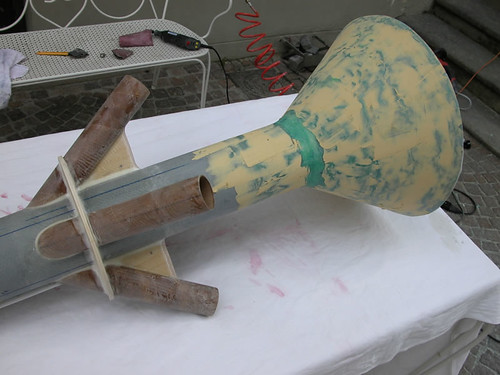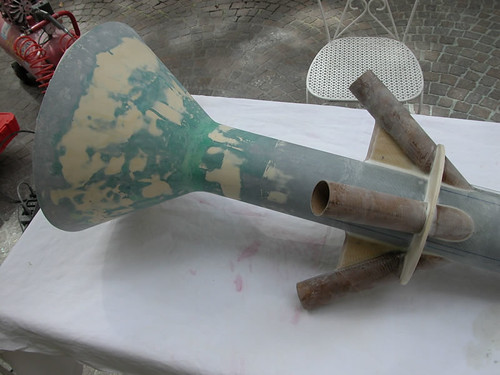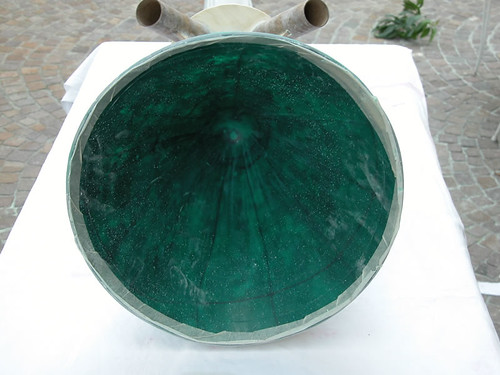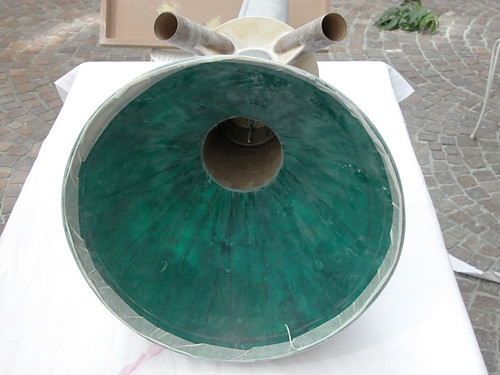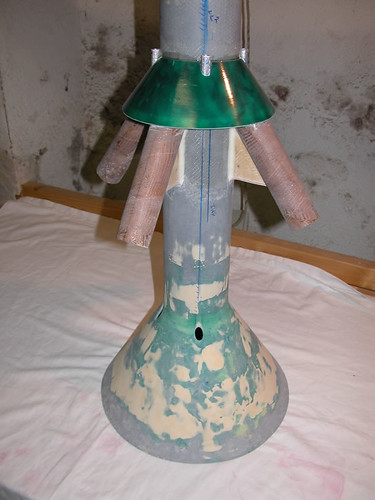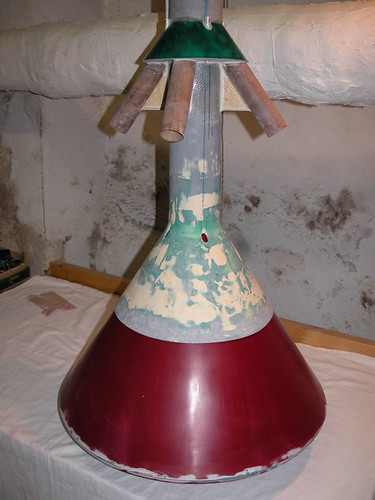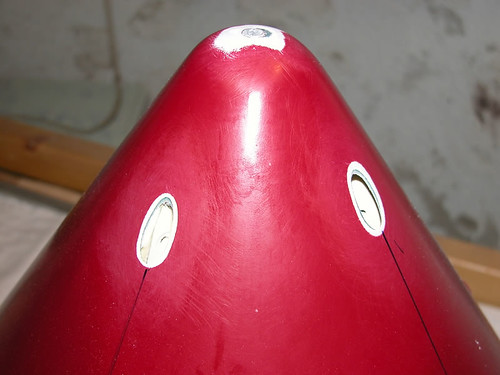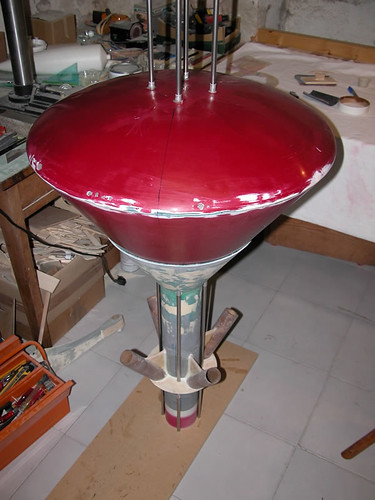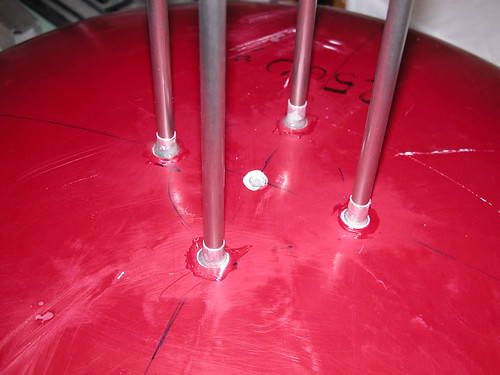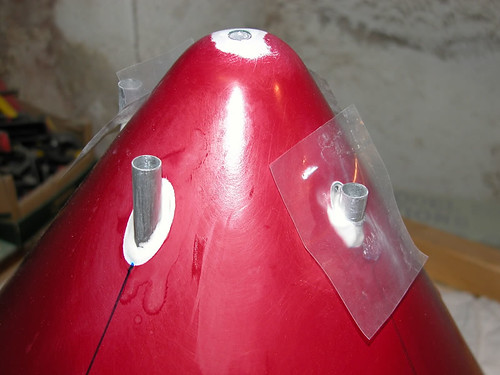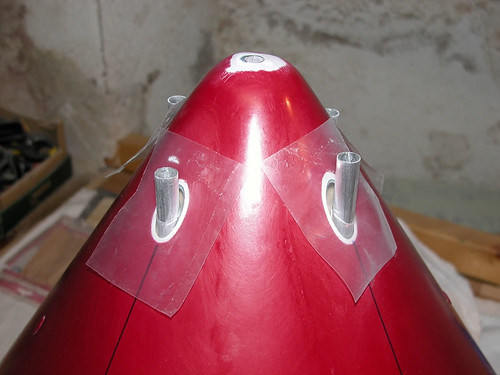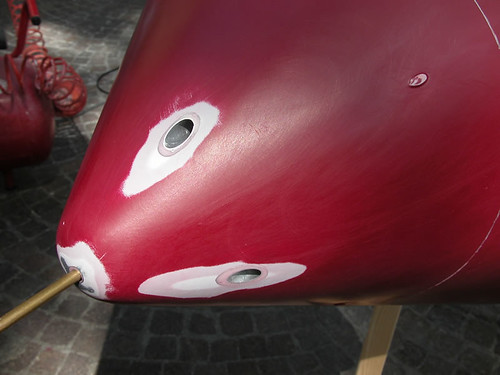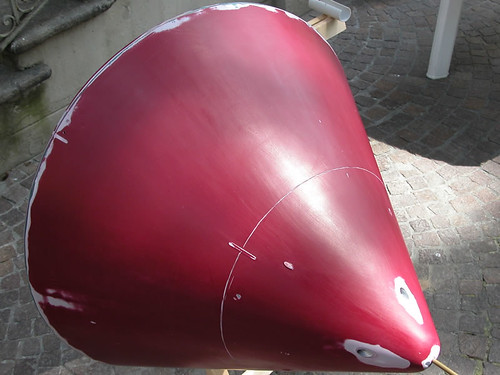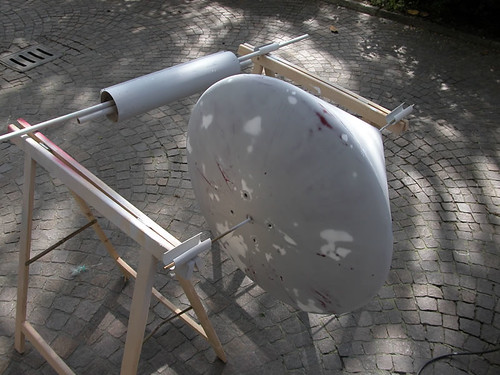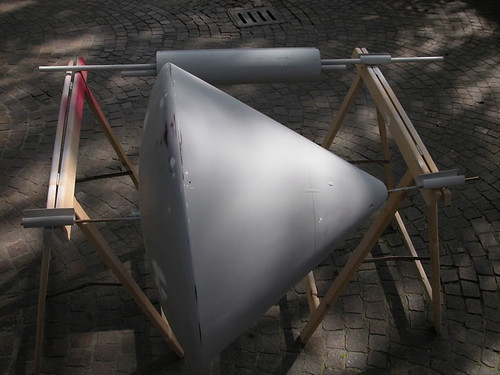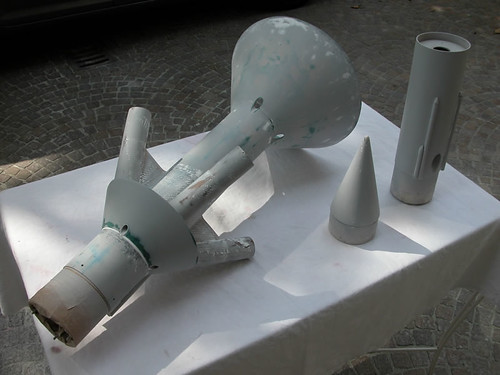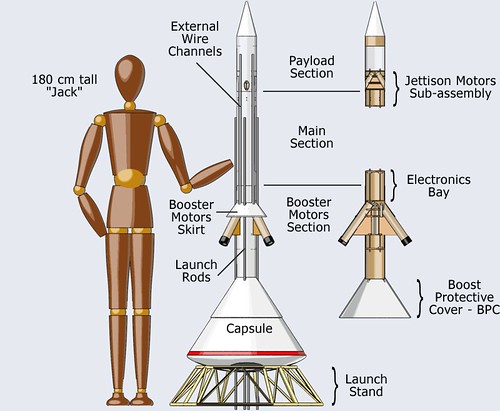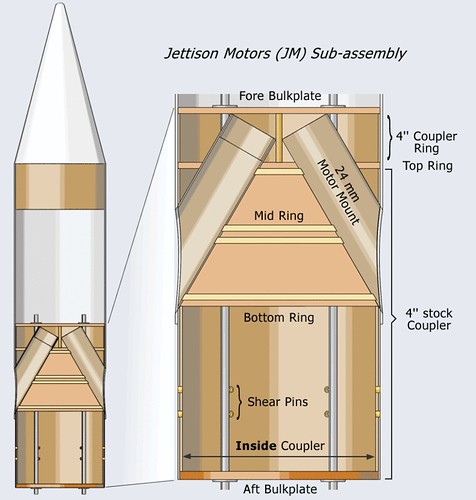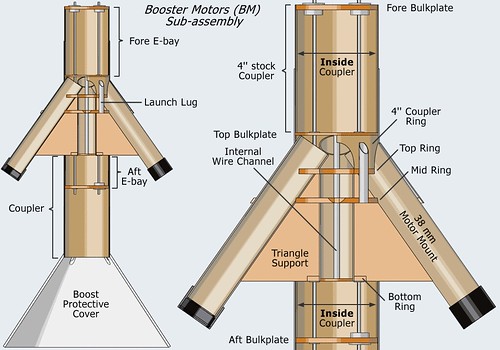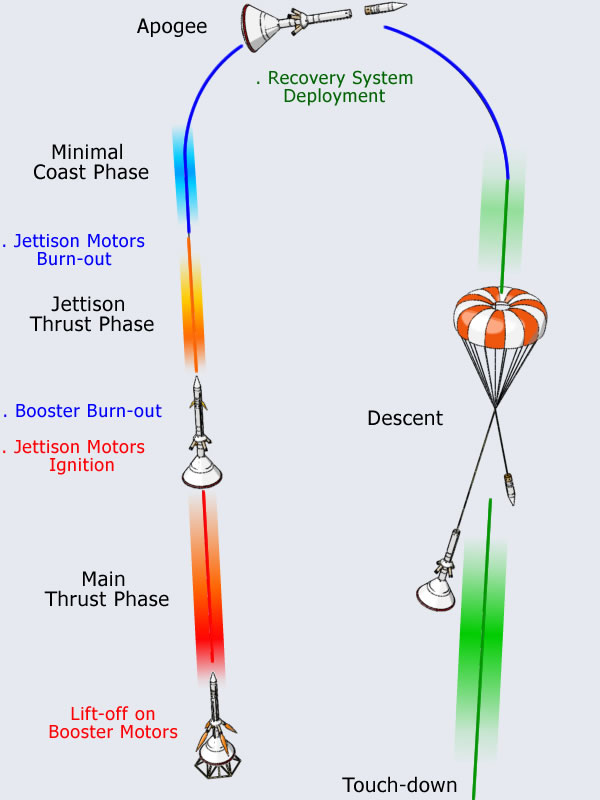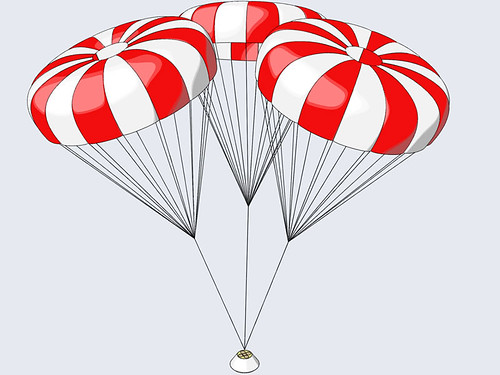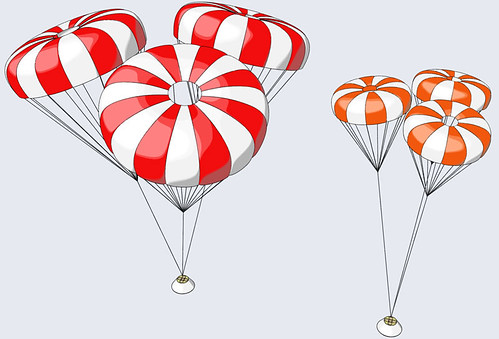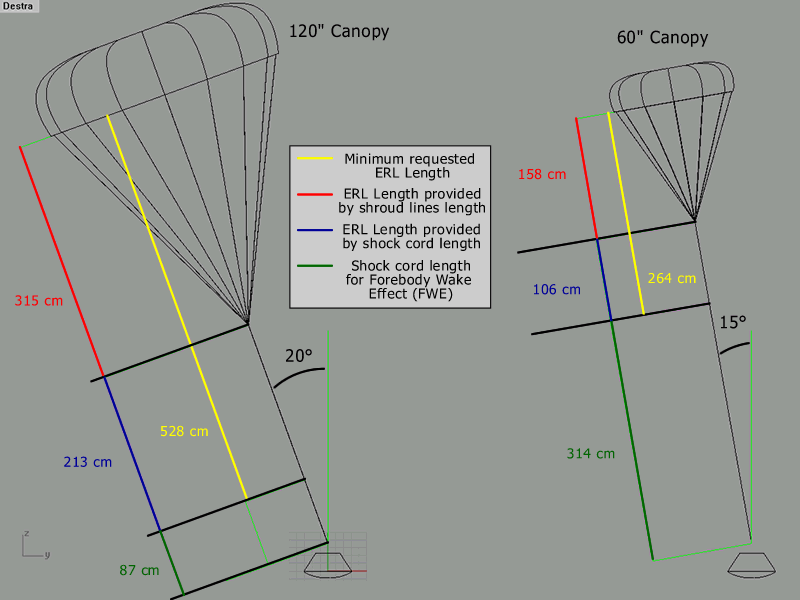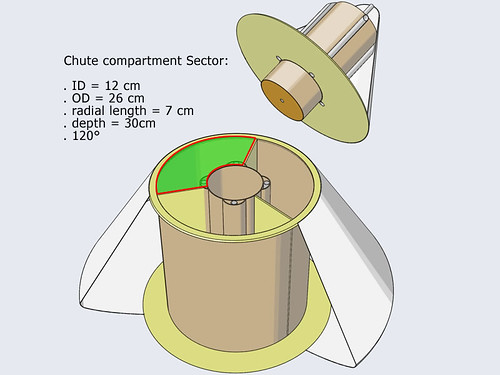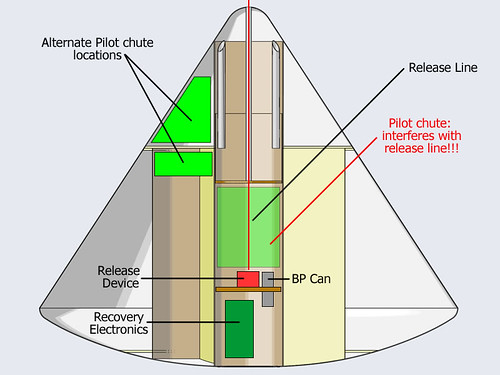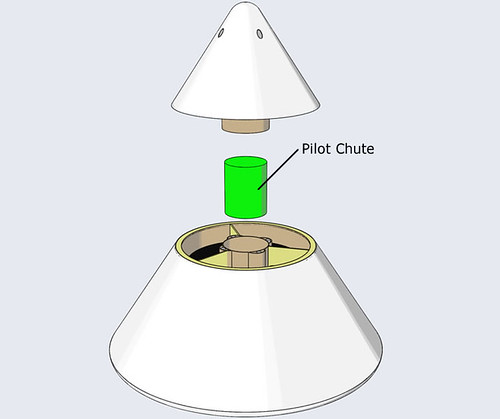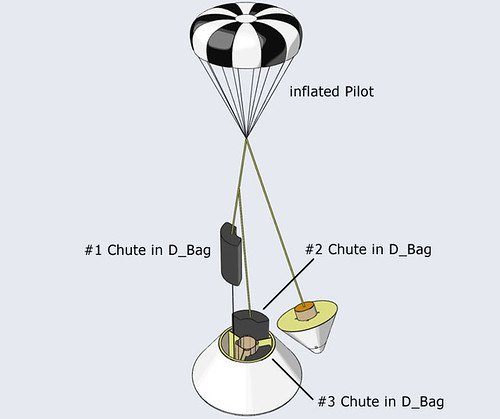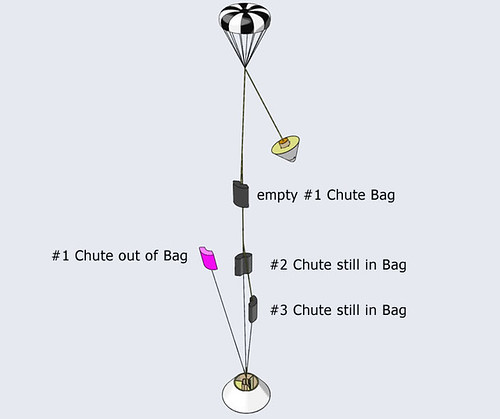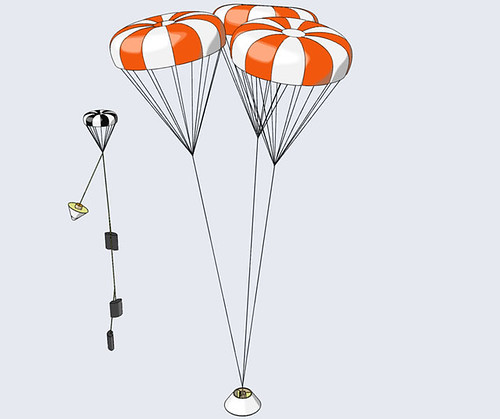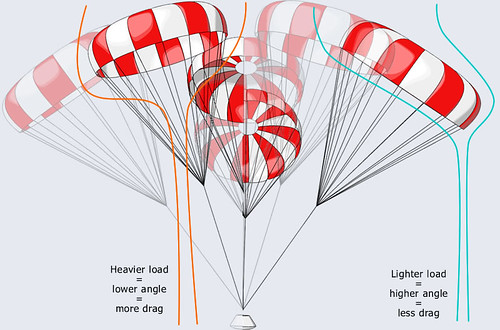Three 120” chutes seem huge for a 5 pound rocket.
Even one 120” chute seems to be larger than necessary.
Yes there is a bit of loss by the chutes tipping over, but still, it is not that drastic.
The shadow effect of the CM is irrelevant for something like this, at least regarding descent rate once even one of those chutes opens, so that has no bearing on choosing chute size.
Well, years ago I flew my Little Joe-II with a simulated Command Module inside of it, which had three 10” chutes on it. The CM was sort of light, maybe an ounce, maybe a bit less than an ounce. I had test flown it and it came down pretty slow, slower than the rest of the model did, so it landed last. Then when I few it at the actual contest, the CM hit a thermal ,and FLEW AWAY!
So, the efficiency loss is not THAT BAD!
You could even throw together a very simply little test, use three 12” plastic chutes on a nosecone with some weight in it, and get a feel for how fast it comes down. If you had access to a place where you could do a drop test of 20 feet or more, that would be an easy and fast way to do it. If not, then use a rocket -just use the three 12” chutes on some rocket weighing let’s say 3 or 4 ounces, and see how it goes. From that you’d get a feel for whether the descent rate seemed a bit too fast, a bit too slow, or about right. Then you could scale that up using total AREA (not diameter) of ONE chute divided by the mass of the rocket.
To simplify the math here, let’s assume the chutes are square chutes, not round. This does not mean that the answer will be “wrong” or only good for square chutes, because what we really want in the end is to derive the correct diameter of the big chute, so simplifying the area calculations will even itself out at the end.
OK, so the area of a 12” chute (if square) is 144 sq inches.
The area of 144” divided by 4 ounces would be 36, so 36 square inches of chute per ounce.
Now a 5 pound rocket is 80 ounces. So take that 36 square inches per ounce and multiply by 80, and that is 2,880 square inches of chute area [EDIT - originally I had made a typo here and typed 2280 when I meant 2880. The rest of the answer was correct, the square root of the area, to give the diameter of 53.67 was based on 2880].
OK, so now, we get the square root of 2,880, which is 53.67 inches, or 54”. And now “poof” we forget we used square chutes to simplify the math, and real-world it would take three 54” round chutes for a 5 pound (8 0unce) rocket if during a small scale test you found that three 12” round chutes were the right size for a 4 ounce rocket.
Another consideration is what if only one of the chutes opened? Well, that is why you are way overcomplicating this. Because THAT is all you need to be looking at. If only one chute opened, what is the smallest you’d want it to be to land safely enough? Just take that, and there you have it, use three of those, and all the rest above is not necessary.
There are three factors against using chutes that are bigger than you really need.
One is the bigger they are, the heavier they are. So the 5 pound rocket weighs more than a 5 pound rocket the bigger the chutes get.
Two is that if the chutes are larger than necessary, then the rocket (or CM in this case) can be slowed down so much by the first chute that there is not enough airflow to inflate a 2nd or 3rd chute. Or if two chutes open, then there is even less airflow to open a 3rd chute. So if those chute are overly big, that problem will magnify itself.
And that is what happened with the CM I had with the 10” chutes. It’s mass was so low that when I did some drop testing, the first chute would slow it enough that the other chutes did not have a lot of airflow. I had originally packed each chute separately,and rolled each up. What I ended up doing was to pack all three together, I “spiked” all three, then laid the put the three spiked chutes together (parallel), as though they were one chute, and I folded the three chutes as one chute. I did feel a bit leery of that, I do not think I would want to do that for a whole rocket, since if the three chutes got tangled and never opened the whole thing would fall. But that CM was light enough that if they never opened it would have been safe enough.
Three is that the bigger the chutes, the larger the packed chute volume to “cram inside” and to get yanked (or blown) properly out of the rocket. If it turned out for example that this would be safe with 60” chute, but you used 120” chutes, you’d have four times the chute volume to try to pack in, a lot of excess chute to get in and out.
*****
[Edit addition: A 120" chute would probably be MORE than 4 times the volume of a 60" chute. I was just going by square of the diameter, period. But, if the 120" chute was made of THICKER material than a 60" chute would be, or anything else about it was thicker, then its packed volume would be greater than simply the square of the diameter. As it is, one can find and buy 60" chutes made up of various materials that would make the packed volume vary a lot, some 60" chutes would be twice (or half) the packed volume than other 60" chutes, for example, depending on what was used. But I figure that 120" chutes would tend to be "extra heavy duty" and thicker than most typical 60" chutes, both in canopy material and in shroud line material].
*****
Now perhaps the design you plan will be big enough to allow for chutes that big. But if it turned out that they just would not pack as loose as you wanted, but you had already bought three 120” chutes, you’d likely be committed to use them instead of buying three smaller chutes. And since you plan to yank them out with a drogue chute, instead of being blown out, they have GOT to be able to pack compactly enough to slide out easily enough.
Now, I do realize this is somewhat unique in that there is an aesthetic aspect to this, in two ways. One is that the chutes on the real CM were huge relative to the CM itself. So it would look more realistic if the chutes were big. And the other is that the real thing landed relatively slowly, and this will not fly very high, so the slower it lands not only will that be more realistic, you get to enjoy the flight longer.
But aesthetics are things that end up conflicting against reliability. Since the larger the chutes, the greater the chances are they might not get yanked out by the drogue. So there is a fine line to be walked there.
- George Gassaway





